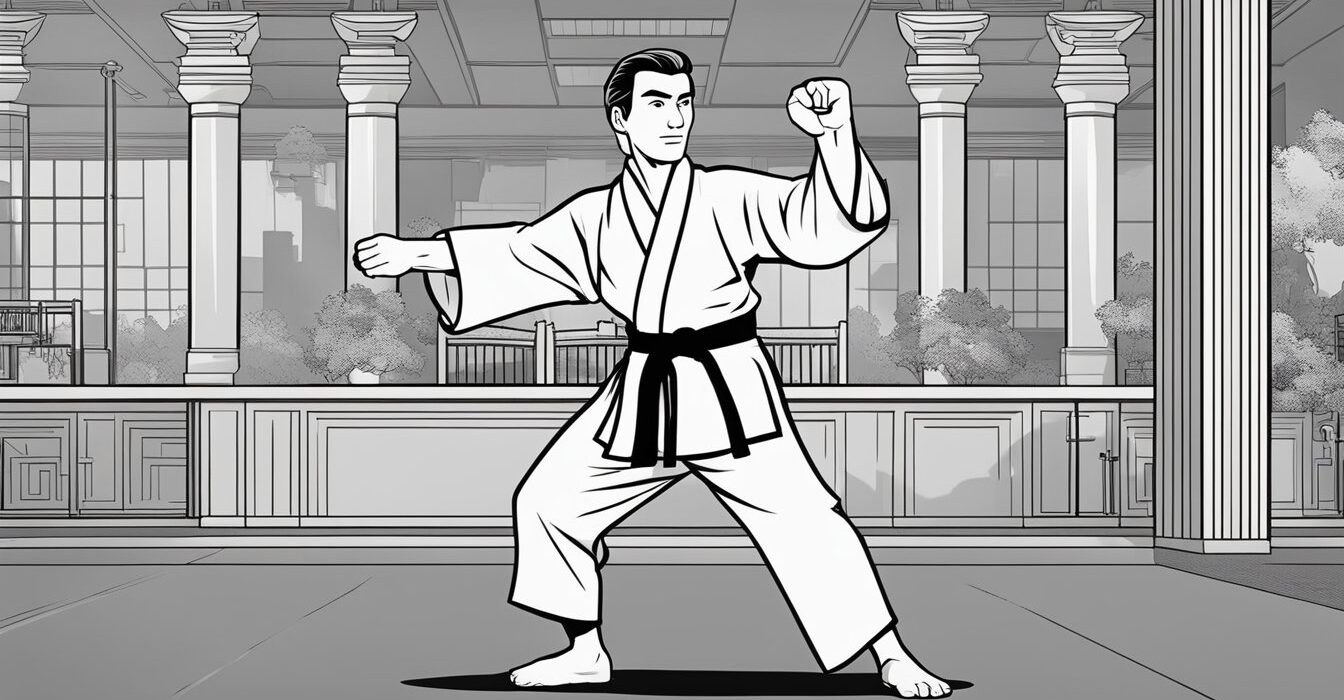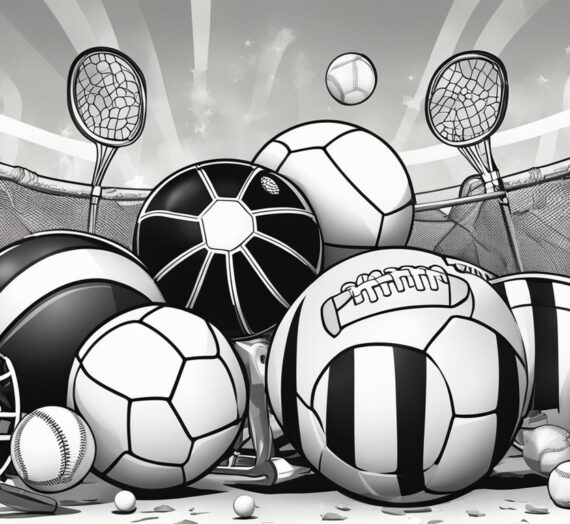Karate Coloring Pages: Fun and Creative Activities for Young Martial Artists. Karate coloring pages offer a creative outlet for both children and adults interested in martial arts. These pages feature various karate poses, techniques, and symbols, allowing enthusiasts to explore their passion through art. Coloring pages can enhance fine motor skills and provide an enjoyable way to learn about the culture and discipline of karate.
Karate Coloring Pages
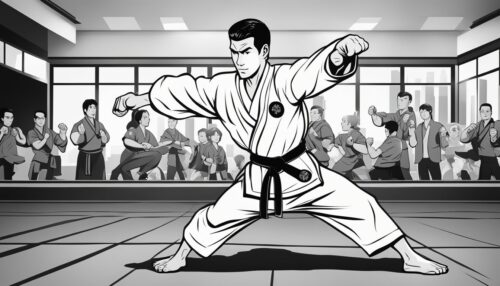
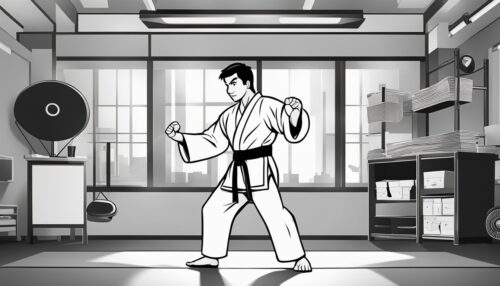
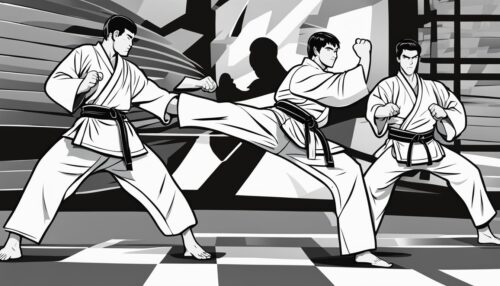
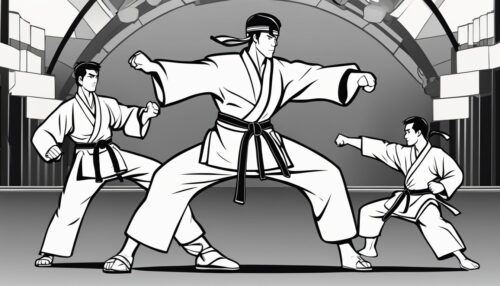

Each page is designed to inspire imagination while educating users about karate’s fundamentals, including different styles and moves. From simple outlines for younger audiences to intricate designs that challenge older artists, there is a range of options available to suit different skill levels. Engaging with these coloring pages not only fosters creativity but also nurtures an appreciation for this traditional martial art form.
Whether one is new to karate or a seasoned practitioner, these coloring pages serve as an informative and entertaining resource. They can be an effective tool for teaching children about the importance of discipline and focus found in martial arts. By combining fun with education, karate coloring pages make learning about this art enjoyable and interactive.
History of Karate
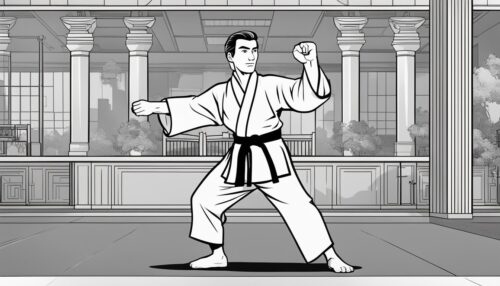

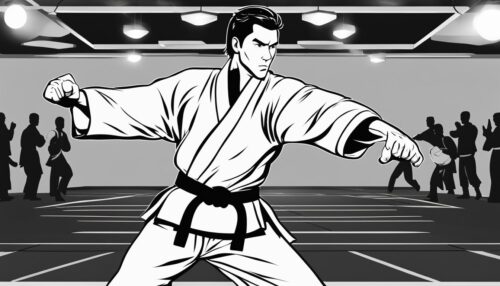
Karate’s history is rooted in the martial arts practices of Okinawa and its gradual evolution as it spread to Japan and other regions. Understanding these origins and developments reveals the discipline’s cultural significance and technical evolution.
Origins in Okinawa
Karate originated in the Ryukyu Kingdom, with strong influences from indigenous Okinawan fighting styles and Chinese martial arts. The earliest records date back to the 14th century. Practitioners initially referred to it as “te,” meaning “hand.” This period saw the development of various techniques, including strikes, blocks, and stances.
The integration of Chinese martial arts began in the 16th century when traders and martial artists from Fujian province visited Okinawa. This exchange introduced new techniques and philosophies, shaping the early foundations of karate. The martial art was often practiced discreetly, as Okinawa was under the influence of various foreign powers.
Spread to Japan and Beyond
In the early 20th century, karate made its way to Japan, primarily through the efforts of Okinawan masters such as Gichin Funakoshi. In 1922, Funakoshi demonstrated karate at a Japanese physical education university, leading to increased interest. This was pivotal in establishing karate as a formal martial art in Japan. Pompeii
Throughout the years, karate evolved, integrating Japanese culture and techniques. Various styles emerged, notably Shotokan, Goju-Ryu, and Shito-Ryu. The discipline began to gain global recognition after World War II, leading to the establishment of dojos worldwide. Today, karate is practiced by millions, showcasing its heritage while continuously evolving.
Basics of Karate

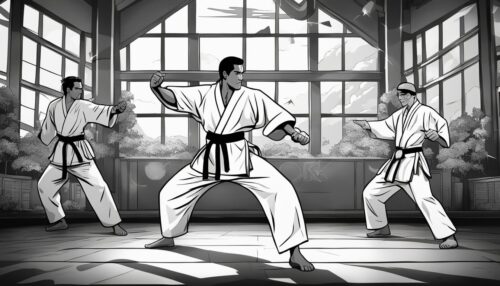
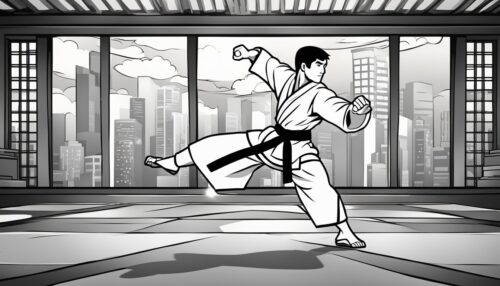
Karate is a well-structured martial art that focuses on discipline and technique. Key components include the traditional uniform and a range of striking techniques that are vital for effective practice.
Understanding the Gi
The Gi is the traditional uniform worn in karate. It typically consists of a jacket and trousers made from durable cotton or a cotton blend. The Gi facilitates ease of movement and is designed to withstand the rigors of training and sparring.
Different styles may have variations in the design or color of the Gi. For example, a white Gi is common in many dojos, symbolizing purity and a beginner’s state. Belts of various colors indicate the practitioner’s rank and level of skill, with black typically representing the highest level of achievement. Proper care of the Gi is essential, as it reflects discipline and respect for the art.
Fundamental Techniques
Karate encompasses a variety of striking techniques, each serving a specific purpose.
- Punches are executed using the fist and can include techniques such as hook punching and straight punches.
- Kicks involve using the legs and feet to deliver powerful strikes.
- Elbows and knees are often used in close-quarter scenarios, providing effective offensive options.
Additionally, karate emphasizes defensive maneuvers such as blocking and dodging to avoid strikes.
Practitioners learn to execute techniques with precision and speed utilizing open-hand techniques for grappling and controlling opponents. Continuous kicking techniques teach fluidity and adaptability during combat. The combination of these techniques creates a comprehensive martial art that focuses on both offense and defense, fostering skill and confidence in practitioners.
Benefits of Karate Practice
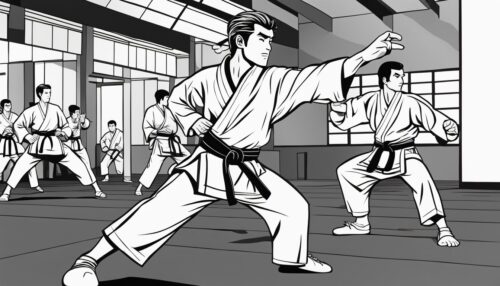
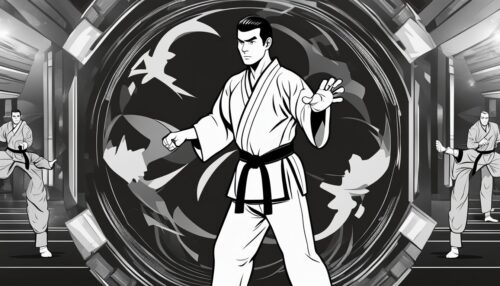
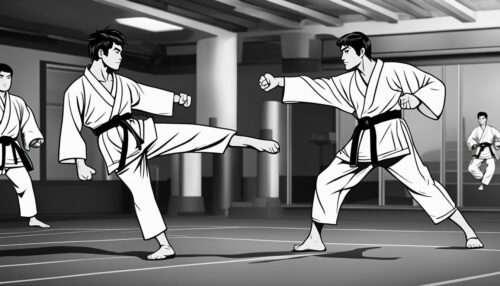
Karate practice offers multiple advantages that enhance both physical and mental well-being. Engaging in this martial art fosters strength and endurance while cultivating concentration and discipline, contributing to an overall healthier lifestyle.
Physical Health and Strength
Karate training significantly boosts physical health. Participants engage in a variety of movements that enhance cardiovascular fitness, flexibility, and muscle strength. The rigorous exercises involved in karate, such as kicking, punching, and stances, help improve body resistance and build endurance.
Through consistent practice, individuals notice increased power in their strikes and improved coordination. Furthermore, practicing karate can aid in weight management by burning calories. The discipline required in karate encourages a healthier lifestyle, including better nutrition choices and regular exercise.
Mental Focus and Discipline
Practicing karate sharpens mental focus and discipline. Participants learn to concentrate on techniques, enhancing cognitive function and critical thinking. Challenges faced during training impart valuable lessons in respect and determination.
The structured environment of karate fosters a sense of discipline. Students learn to follow rules and embrace respect for instructors and fellow practitioners. This mental training instills perseverance, which translates to everyday challenges outside the dojo, enabling individuals to handle stress with greater ease and clarity.
Karate as a Sport
Karate is recognized globally as a competitive sport that combines physical skill with mental discipline. It features structured competitions and a clear ranking system that motivates practitioners.
Sport Competitions
Karate competitions are organized at various levels, from local tournaments to international championships. Participants compete in two main categories: Kumite (sparring) and Kata (forms).
- Kumite involves real-time sparring where competitors aim to score points by landing controlled strikes on their opponent.
- Kata showcases a series of pre-arranged movements that demonstrate technique, precision, and control.
Competitors are judged based on specific criteria, including technique, power, and presentation. Many competitions adhere to guidelines set by governing bodies like the World Karate Federation (WKF), ensuring standardized rules and fair play.
Ranking and Belts
The ranking system in karate is essential for tracking a practitioner’s progress. Students start as white belts and can advance through colored belts until they reach black belt status.
- The color system typically includes yellow, green, blue, and brown belts.
- Advancement requires demonstrating proficiency in techniques, kata, and sparring.
Achieving higher ranks involves rigorous training, evaluations, and sometimes the completion of specific tournaments. Each belt signifies not just skill level but commitment to the art, discipline, and respect for the sport. The ultimate goal for many is to earn a black belt, which represents a high level of achievement and dedication.
Karate Coloring Pages for Different Ages
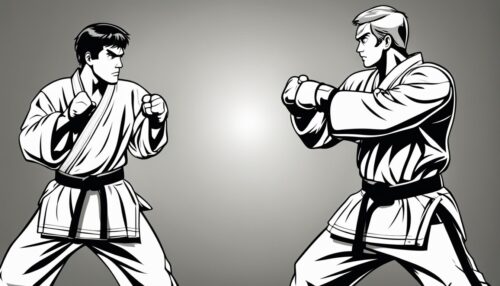
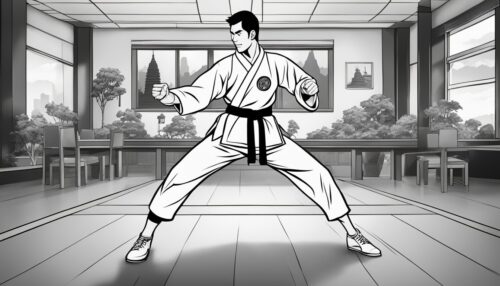
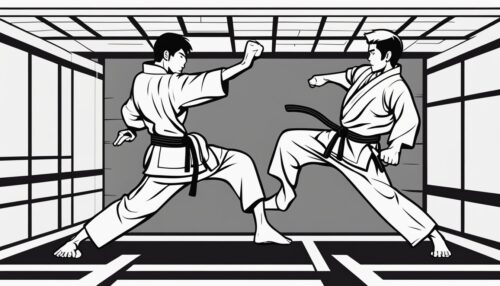
Karate coloring pages cater to a wide range of ages, providing engaging activities that enhance creativity and focus. The designs can vary significantly based on age, skill level, and preference.
Pages for Children
Children’s karate coloring pages are tailored for younger audiences, typically featuring simple and cheerful designs. These pages often depict cartoon characters in karate poses or playful animals engaged in martial arts activities.
Benefits for Kids:
- Skill Development: Coloring helps improve fine motor skills and hand-eye coordination.
- Creative Expression: Youngsters can experiment with colors and techniques freely.
- Educational Value: Pages often introduce basic karate symbols and values.
Many websites offer free printable pages, making them easily accessible. Parents can choose from easy outlines to more complex images, depending on the child’s age and experience.
Adult Coloring Variants
Adult-oriented karate coloring pages present more intricate designs and patterns, often focusing on traditional elements of martial arts. These pages may include detailed illustrations of karate stances, belts, and cultural symbols.
Advantages for Adults:
- Stress Relief: Engaging in coloring can reduce anxiety and promote relaxation.
- Focus and Mindfulness: Adults can benefit from the meditative nature of coloring.
These pages are suitable for individuals seeking a creative outlet. Available coloring books and online resources can provide various themes, appealing to those with a passion for martial arts or artistic expression.
Karate Techniques and Stances Coloring
Karate coloring pages often include various techniques and stances that are vital to the practice of this martial art. Understanding these forms enhances both the appreciation of karate and the activity of coloring. Proper representation of these techniques can aid practitioners and enthusiasts alike.
Coloring Karate Forms
Karate forms, known as “katas,” are essential sequences of movements that depict specific techniques. They include a combination of strikes, blocks, and stances. When coloring these forms, practitioners can visualize the flow and rhythm of each kata.
Key katas may include:
- Heian Shodan: A beginner’s kata focusing on basic stances and techniques.
- Tekki Shodan: Emphasizes a strong horse stance and lateral movements.
- Kanku Dai: A more advanced kata with a wide range of techniques.
Coloring these forms promotes recognition of techniques and helps improve focus.
Practitioner Movements
Coloring pages depicting karate movements showcase various stances and attacking techniques. Each movement, like front kicks or side punches, serves a unique purpose in training and self-defense.
Common movements to color include:
- Zenkutsu Dachi: The forward stance, emphasizes balance and power.
- Kiba Dachi: The horse stance, essential for stability.
- Gedan Barai: The downward block, crucial for defense.
These movements highlight the discipline involved in karate. Practicing such coloring reinforces understanding of the physicality required for effective training and improves hand-eye coordination through coloring.
Preparation for Coloring
Before starting the coloring process, it is essential to gather the right materials and choose the appropriate colors. By considering these factors, individuals can enhance their coloring experience and achieve better results with karate-themed images.
Choosing the Right Colors
Selecting colors for karate coloring pages can significantly impact the finished artwork. Bright, vibrant shades may convey energy and excitement, while softer tones might evoke a sense of calm.
Recommended Colors:
- Gi (Uniform): Traditionally white or blue.
- Belt: Different colors represent ranks—yellow for beginners, black for experts.
- Background: Use contrasting colors to make the karate figure stand out.
To create an engaging composition, it may help to use a color wheel. This allows for easy identification of complementary colors that enhance the overall look. Additionally, consider experimenting with color blends to introduce unique shades and tones.
Printing and Material Tips
When preparing to color, the choice of material is crucial. High-quality printing ensures that colors appear vibrant and do not bleed. It is advisable to use thicker paper, which accommodates various coloring tools without warping.
Printing Recommendations:
- Format: Download printable PDF versions for better quality.
- Paper Weight: Use paper with a weight of at least 80 lbs for optimal results.
- Printer Settings: Set the printer to “high quality” for the best outcome.
In addition, selecting the right coloring tools enhances the creative process. Pencils, markers, and crayons each offer unique textures and finishes. For sharp lines, colored pencils are ideal, while markers can provide bold, solid areas of color.
Inspiration for Coloring
Coloring pages inspired by karate offer both creative and therapeutic benefits. These pages encourage precision in coloring techniques while also promoting relaxation and mindfulness through artistic expression.
Sources of Creative Inspiration
Karate coloring pages can draw inspiration from various elements of karate culture, including traditional attire, stances, and dynamic movements. Artists often infuse their creations with authentic details, such as the gi (uniform) worn by practitioners and the unique symbols associated with different karate styles.
Additionally, martial arts films and competitions can serve as motivation. Observing skilled martial artists performing intricate techniques can spark creativity, inspiring individuals to capture those actions through coloring. They can explore various martial arts settings and backgrounds, enhancing the overall coloring experience.
Coloring for Mindfulness and Relaxation
Engaging with karate coloring pages can significantly promote mindfulness. The action of coloring requires focus and attention to detail, encouraging individuals to immerse themselves in the task. As they concentrate on the colors, they cultivate a sense of presence that can help reduce anxiety.
Moreover, the structured nature of karate—with its emphasis on precision—may enhance the coloring process. Practitioners can replicate the disciplined movements in their artwork, leading to satisfaction and a sense of achievement. This combination of relaxation and creativity serves as an effective outlet, allowing individuals to express themselves joyfully and freely.
Martial Arts Coloring Pages
Martial arts coloring pages offer a creative way to engage with various forms of martial arts while enhancing fine motor skills. These pages cater to different skill levels and interests, making them appealing to a wide audience.
Variety in Martial Arts Pages
Martial arts coloring pages encompass a diverse range of styles, including karate, judo, taekwondo, and more. Each page typically features distinct poses, techniques, and attire specific to the martial art depicted.
For instance, karate pages may illustrate high kicks or powerful punches. In contrast, judo pages might focus on grappling techniques or throws. This variety can spark interest in various disciplines, allowing children and enthusiasts to learn about different martial arts while engaging in a fun activity.
Additionally, these coloring pages can be tailored for different age groups. Simpler designs work well for younger children, while more intricate patterns can challenge older kids and even adults who appreciate martial arts.
Coloring Pages for Beginners
Beginner-friendly martial arts coloring pages are designed with simplicity in mind. They often feature basic shapes, clear outlines, and fewer details, making them suitable for young children or those new to coloring.
These pages can include iconic martial arts symbols or easy-to-color characters in traditional uniforms, such as the gi in karate or the judogi in judo.
Learning through coloring helps beginners connect with martial arts concepts. As they color, they may develop an understanding of stances and movements while appreciating the discipline and focus inherent in martial arts training.
Incorporating these pages into educational settings can foster creativity while promoting physical fitness awareness, as children often associate these activities with the energetic movements of martial arts.
